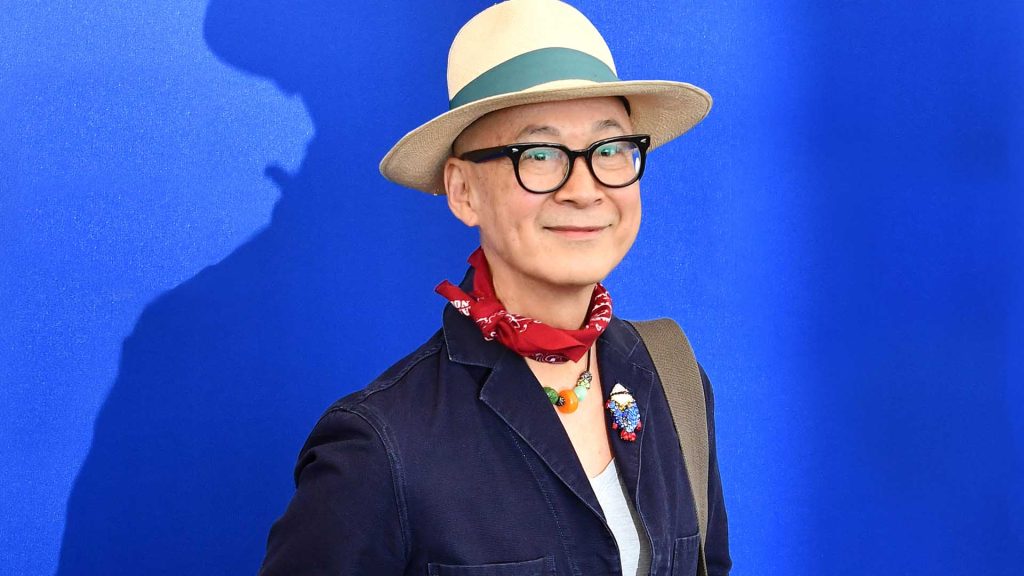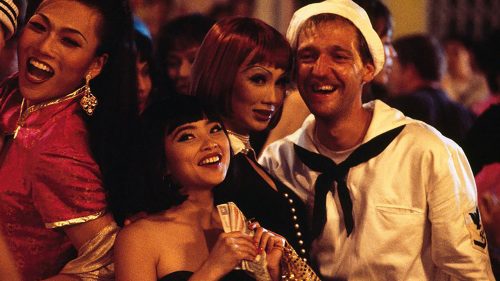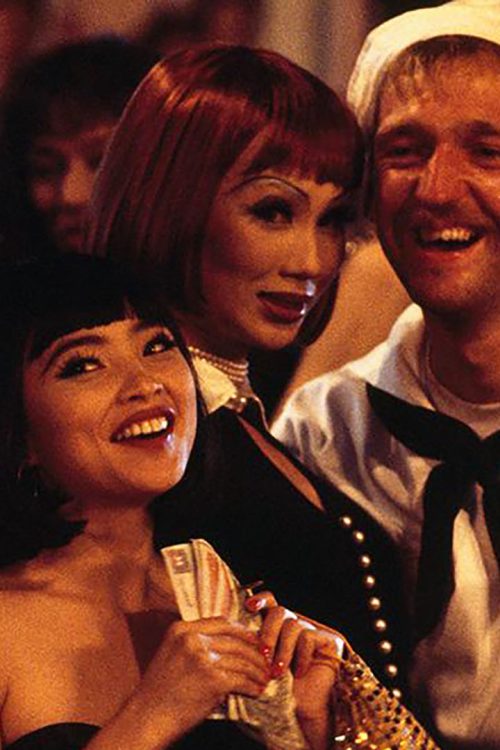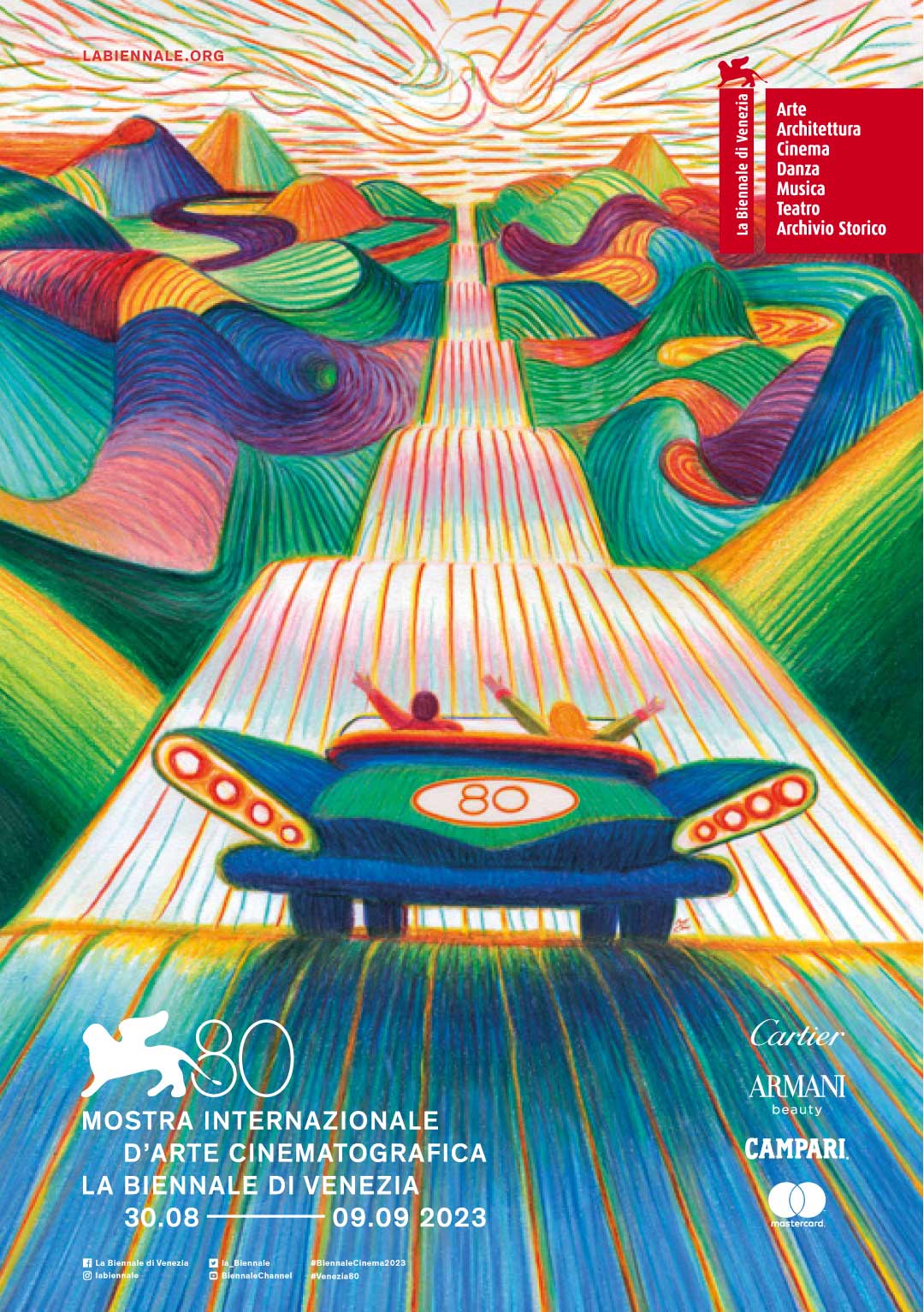
Venice Classics presents the restoration of Yonfan’s Bugis Street, curated by L’immagine ritrovata and Far Sun Film: the film rediscovers the “dance of colors” so loved by the Master.
In Bugis Street, we get to see a lot of objects: orange hairdryers, portraits of geishas, Elvis Presley, Bruce Lee, bonsais and wall fans… Do you use them to merely create the setting or do they have a meaning in your life?
What I did in this film, and what I love to in movies generally, is to create a world using both reality and fantasy. Bugis Street is set in the 1960s. Now, did I want to make an exact replica of that time? Did I want to recreate it exactly? No. Even if anything looked just the same as it did then – clothes, accents, objects – it would still be a reconstruction, something fake. We reinvented the past, which gave me freedom to use whatever I wanted in my film, even if it didn’t belong to that period. I picked those items because I felt it looked good. No, Bruce Lee does not belong to that period, but I don’t care, because it’s not Bruce Lee we are talking about, and movies are art. I am not copying reality and building a fake antique out of it. I am making new, original art.

In today’s Singapore, the Bugis Street of the 1970s is but a faded memory. The area has been redeveloped and destined to more upstanding business. Long gone are the allusive laughter and the nervous voices of transexuals and cross-dressers that resonated in the merry Sodom a...

In today’s Singapore, the Bugis Street of the 1970s is but a faded memory. The area has been redeveloped and destined to more upstanding business. Long gone are the allusive laughter and the nervous voices of transexuals and ...
We admired the colors, the violet dresses, the yellow lampshade. Then the pastel pink, the amaranth, the sky blue; the same night becomes a darker blue. Do the colors have a hidden meaning, or are they just devices to bring the frames to life?
You know, before I started making movies, I was a photographer – first amateur, then professional. I learned the trade by myself. I am very sensitive to colour and film. Bugis Street was shot in Panavision, which was quite ambitious at the time, due to its requirements in terms of cameras, lighting, etc… We shot it on Kodak film. I feel the magic of colour in that film stock, because it has layer over layer of depth and atmosphere, and colour deep down inside. Back then, there was no way digital could render the same way, but now technology is much more advanced. It can find every little secret hidden in that stock. I worked with the restorer, they knew what I wanted and what I need. They know what I mean by green, by red, by yellow, by blue… they did an amazing job, which I truly appreciate.
I want my colours to dance. I filmed extended sequences of moonlit nights, so blue, lots of blue with some yellow in it. And then more yellow when someone switched on the light, blue again. It’s like a choreography for colours. And there’s green and red and the flowing of curtains under the breeze. There is not much movement in this film, which is why I wanted to create some choreography whenever I could. Every sequence should have some: wind, curtains, lighting. The movie dances non-stop.
The film begins with the pendulum, then the radio, a fan, nature with its clouds and trees. You portrayed a traditional world, but in the end, the skyscrapers of Singapore appear. Which of the two worlds do you prefer?
I like the old world. My movie is an homage to the old world, a world we came out of. It is only at the end that I take you into the new world, to a continuously developing Singapore. So, we have a movie made in the 1990s, set in 1960s, that looks forward to the future of the country. I feel it’s pretty romantic, I don’t know if this makes sense!
In 1995, the issue of intersexuality and gender identity was a delicate topic. Do you think the situation has improved today?
Before principal photography started, my producer and I met with the Singaporean government to make sure we could do what we planned. The ministry told us that we were allowed to film whatever we wanted, but to show the movie theatrically in Singapore, that’s when we would need to pass censorship. The amazing thing is that, in the end, the movie passed as-is. When we distributed the film in Hong Kong, though, not only was it labelled category three – meaning you had to be over 18 to watch it – but they made three cuts, too. I didn’t even know; I was told afterwards. As per Singapore, I haven’t been there for so long I cannot really comment. I know that an earlier digital restoration passed at the Singapore Film Festival with no cuts, but that was only one screening at the Festival. It doesn’t prove anything. The film industry is quite free in Singapore, I believe. You can make your movie, then yes, you will have to pass censorship if you want to show it. But the thing is, every market has their rules. When I make a movie, I never think of, say, Chinese censorship. They have their rules on whatever you can import there, and I will follow their rules. None of my movies has been made specifically for China, anyway, even if I do enjoy some visibility there.
In recent years, we have seen Japanese, Korean, and especially Chinese films with a strong nationalist character, such as Cheng Er’s Hidden Blade, Lee Hae-young’s Phantom, and Leong Po-chih’s Hong Kong 1941. Is this a way to secure state funding or does it signal a resurgence of nationalism? Even in your film Jìyuántái qīhào, there is a reference to anti-British riots…
Cinema is a very strong propaganda machine. One of the ways the world is messed up now is because the media brainwash young people. It’s very chaotic and I think that using cinema to brainwash people or push one idea or the other is just not a correct thing to do. Not the correct instrument, anyway.
Why is it so hard for some East Asian movies to be distributed in Europe?
It’s very strange. I don’t understand myself. I was told that all my movies would perform well in France, for example. They say they feel très français. But French distributors? They say: I like your movie, but it is not for us. It’s very strange. There are some distributors that I personally don’t like. They love the movie, but I refused to sell it to them. I can be strange like that.
What’s next?
My next film will be about a woman, a painter who lived in Shanghai and was loved by three men. The film will show Shanghai in the 1930s, 40s, and 50s, times changing and China changing, switching from capitalism to communism. I am not quite so simple as people think of me in my home country. They think I only do pretty things and not much more!

You will receive the Daily 2023, the official magazine of the 80 Venice Film Festival on a daily basis